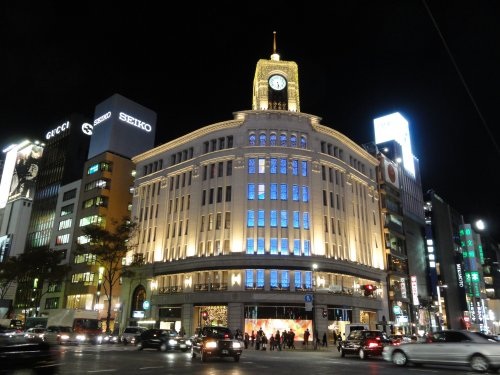- Home
- World War I
- Civics & Government
- Ideologies (Types of Government)
- Governor General: Head of State vs Head of Government
- Parliament, House of Commons and Senate
- The Executive Branch and Cabinet
- The Legislative Branch
- The Judicial System
- Representative Democracy, Constitutional Monarch & Federal State
- Federal, Provincial, Shared & Municipal: Government Responsibiliites
- The Constitution
- The Electoral System: Political Parties
- The Political Spectrum
- The Election Process: Who Can Vote?
- Majority & Minority Government
- First Past the Post vs Proportional, Representation vs Prefrential Ballot
- Influences on the Government
- Human Rights in Canada
- Provincial Human Rights Legislation
- Canada in the 1920's
- Winnipeg General Strike
- Regionalism In Canada
- The King-Byng Crisis
- The Balfour Report
- USA Investment and Branch Plants
- Prohibition and Bootlegging
- Women in the Roaring 20's
- Improved Mobility and Communicationss
- Art and Entertainment in the 1920's
- Minorities in the 1920
- Black Tuesday: The Stock Market Crash of 1929
- Canada in the 1930s
- Causes of the Depression
- Pogey - Government Payment
- Government Stops - Immigration 1931
- Prime Minister King and The Depression
- Prime Minster Bennett and The Depression
- Protests Against the Depression
- The J.S. Woodsworth and the CCF
- Maurice Duplessis and the Union Nationale
- Equalizations Payments
- The Rise of the Dictaorships
- The Policy of Appeasement
- Canada in World War II
- Canada and the Cold War
- Life in Canada during the Cold War
- The Marshall Plan
- Baby Boomers
- Social Welfare and International Aid
- The CBC, CRTC and Rise of Television
- The Age of the Automobile
- Era of Protest and Women’s Liberation Movement
- Expo ‘67 and Canada’s Centennial
- Trudeaumania
- Prime Ministers of the Era: St. Laurent, Diefenbaker, Pearson, Trudeau
- The Avro Arrow
- The St. Lawrence Seaway
- NORAD
- Inflation and OPEC
- The National Energy Program
- The 1972 Summit Series
- Citizenship Act of 1976 and Immigration Act of 1978
- From Mulroney to Present
- The Cold War Ends: Détente, SALT I and II, Glasnost, Perestroika
- The Falling of the Berlin Wall, 1989 and Breakup of Soviet Union
- Prime Minister Mulroney: FTA, NAFTA, Deficits and GST
- Operation Desert Storm
- Peacekeeping: Somalia (1992) and Rwanda (1994)
- NATO, Kosovo and International Criminal Court (ICC)
- Kim Campbell, The Montreal Massacre and Women in Canada
- Irene Murdoch and Rosemary Brown
- 1993: Jean Chretien, Bloc Quebecois and Reform Party
- Public Health Care: Two Tier System
- Canadarm and SDI
- Pacific Salmon Wars and the Pacific Salmon Treaty
- Terry Fox, Rick Hansen, Craig Kielburger, David Suzuki
- The War on Terror and Land Mines
- The Group of Eight (G8)
- The Environmental Movement and the Kyoto Accords
- Refugees and Boatpeople
- CIDA, ODA, International Aid
- Quebec and Aboriginal Issues in Canada
- Native Suffrage, 1960 and the White Paper, 1969
- Land Claims
- Oka Standoff, 1990
- The Nisga’a Treaty
- Nunavut
- Maurice DuPlessis and the Union Nationale
- The Quiet Revolution
- The FLQ and the October Crisis, 1970
- The War Measures Act, 1970
- The Parti Quebecois and Bill 101
- Referendum, 1980
- Constitution Act of 1982
- Meech Lake Accord, 1987
- Charlottetown Accord, 1992
- Bloc Quebecois and Referendum 1995
- Potential Impacts of Separation
- Human Geography: Population, Living Standards, Urbanization
- Population: Canada and the World
- Census, Population Rates and the Rule of 70
- Demographics and Migration
- Population Pyramids
- Living Standards
- Poverty (and how to measure it)
- The Poverty Trap
- The Effects of Poverty on Women and Children
- The Health Crisis: Fresh Water and Epidemics
- Urbanization
- Function and Form in Cities
- The Use of Automobiles in Cities
- Land Uses in Cities
- Sustainability in Cities
- Aquifiers and Surface Water
- The Hole in the Ozone Layer
- Global Warming
- Agriculture and Soils
- Declining Forests
View Urban sprawl and over 3,000,000 other topics on Qwiki.
Land Uses in Cities
Cities are usually planned out
When they are not urban sprawl develops
There is a lot of competition for land
Peak-value intersections (PVIs) are worth the most as they get the most exposure
Land is zoned in cities based on an official plan
Zoning by-laws are created to prevent unlike zoning
When they are not urban sprawl develops
There is a lot of competition for land
Peak-value intersections (PVIs) are worth the most as they get the most exposure
Land is zoned in cities based on an official plan
Zoning by-laws are created to prevent unlike zoning
Summary
In large cities, there is often a lot of competition for land because they try to plan them to make sure there isn't a lot of urban sprawl, since cities are supposed to be close to everything in general. Peak- Value intersections are regions within a settlement with the greatest land value and commerce. They are usually located in the central business district of a town or city, and has the greatest density of transport links such as roads and rail. Land zoning in cities typically segregates land uses into three main categories - residential, commercial, and industrial. Thus, if a section of a city is zoned residential, then no commercial uses are allowed in the area.


